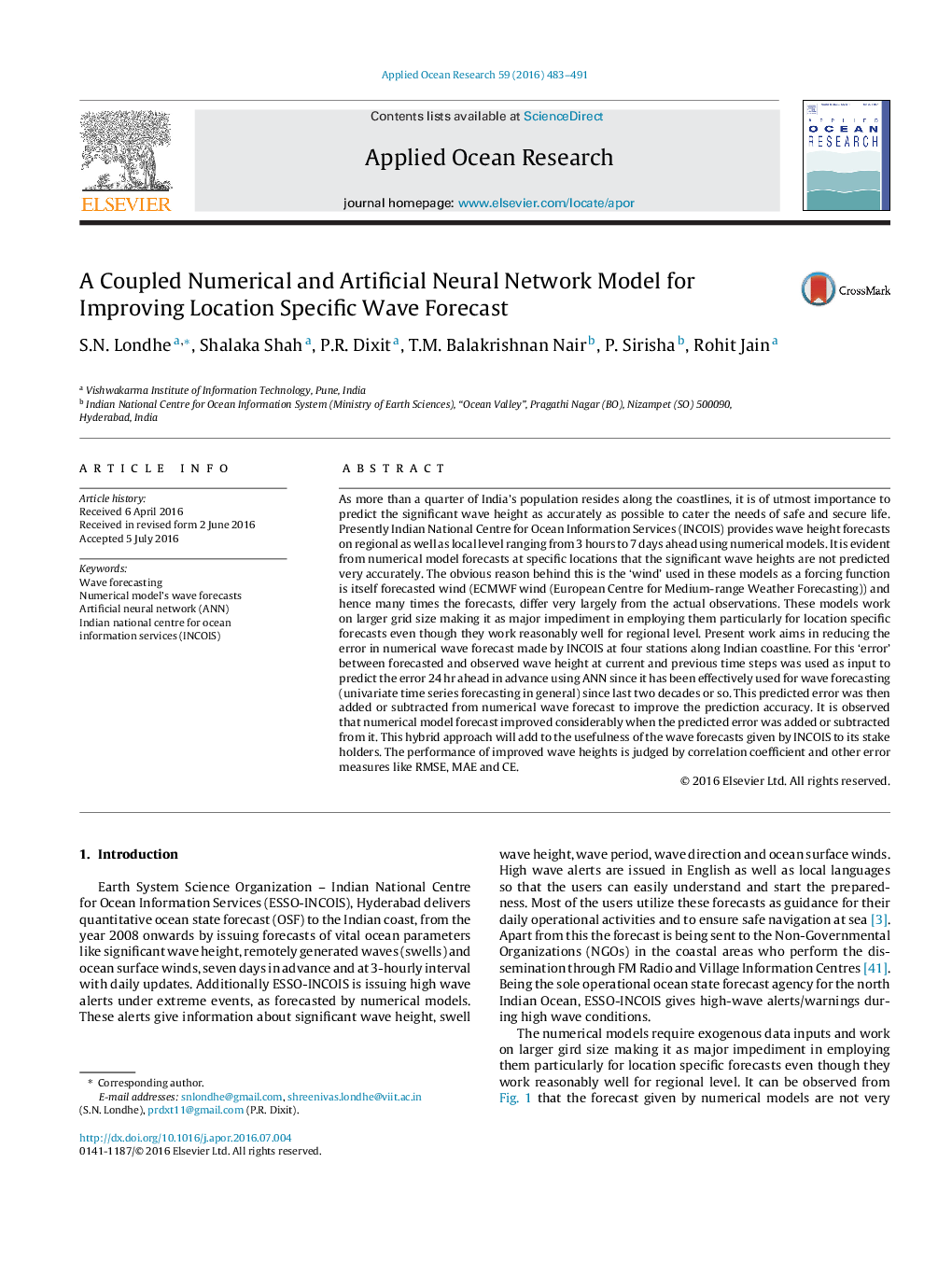| Article ID | Journal | Published Year | Pages | File Type |
|---|---|---|---|---|
| 1719796 | Applied Ocean Research | 2016 | 9 Pages |
•Improving location specific wave forecasts made by INCOIS, by coupling the numerical method with a soft computing tool, namely Artificial Neural Network.•The error between the numerical model forecast and the observed value is predicted 24 hours ahead using ANN.•Incorporating the advantages of both the numerical method and ANN to get reasonably accurate results for 24 hours ahead wave forecasts at 4 stations along Indian coastline.•Use of Average Mutual Information to decide the number of previous time steps used as input for the ANN models developed at each station.•Real time implementation of the models developed for all the four stations.
As more than a quarter of India’s population resides along the coastlines, it is of utmost importance to predict the significant wave height as accurately as possible to cater the needs of safe and secure life. Presently Indian National Centre for Ocean Information Services (INCOIS) provides wave height forecasts on regional as well as local level ranging from 3 hours to 7 days ahead using numerical models. It is evident from numerical model forecasts at specific locations that the significant wave heights are not predicted very accurately. The obvious reason behind this is the ‘wind’ used in these models as a forcing function is itself forecasted wind (ECMWF wind (European Centre for Medium-range Weather Forecasting)) and hence many times the forecasts, differ very largely from the actual observations. These models work on larger grid size making it as major impediment in employing them particularly for location specific forecasts even though they work reasonably well for regional level. Present work aims in reducing the error in numerical wave forecast made by INCOIS at four stations along Indian coastline. For this ‘error’ between forecasted and observed wave height at current and previous time steps was used as input to predict the error 24 hr ahead in advance using ANN since it has been effectively used for wave forecasting (univariate time series forecasting in general) since last two decades or so. This predicted error was then added or subtracted from numerical wave forecast to improve the prediction accuracy. It is observed that numerical model forecast improved considerably when the predicted error was added or subtracted from it. This hybrid approach will add to the usefulness of the wave forecasts given by INCOIS to its stake holders. The performance of improved wave heights is judged by correlation coefficient and other error measures like RMSE, MAE and CE.
